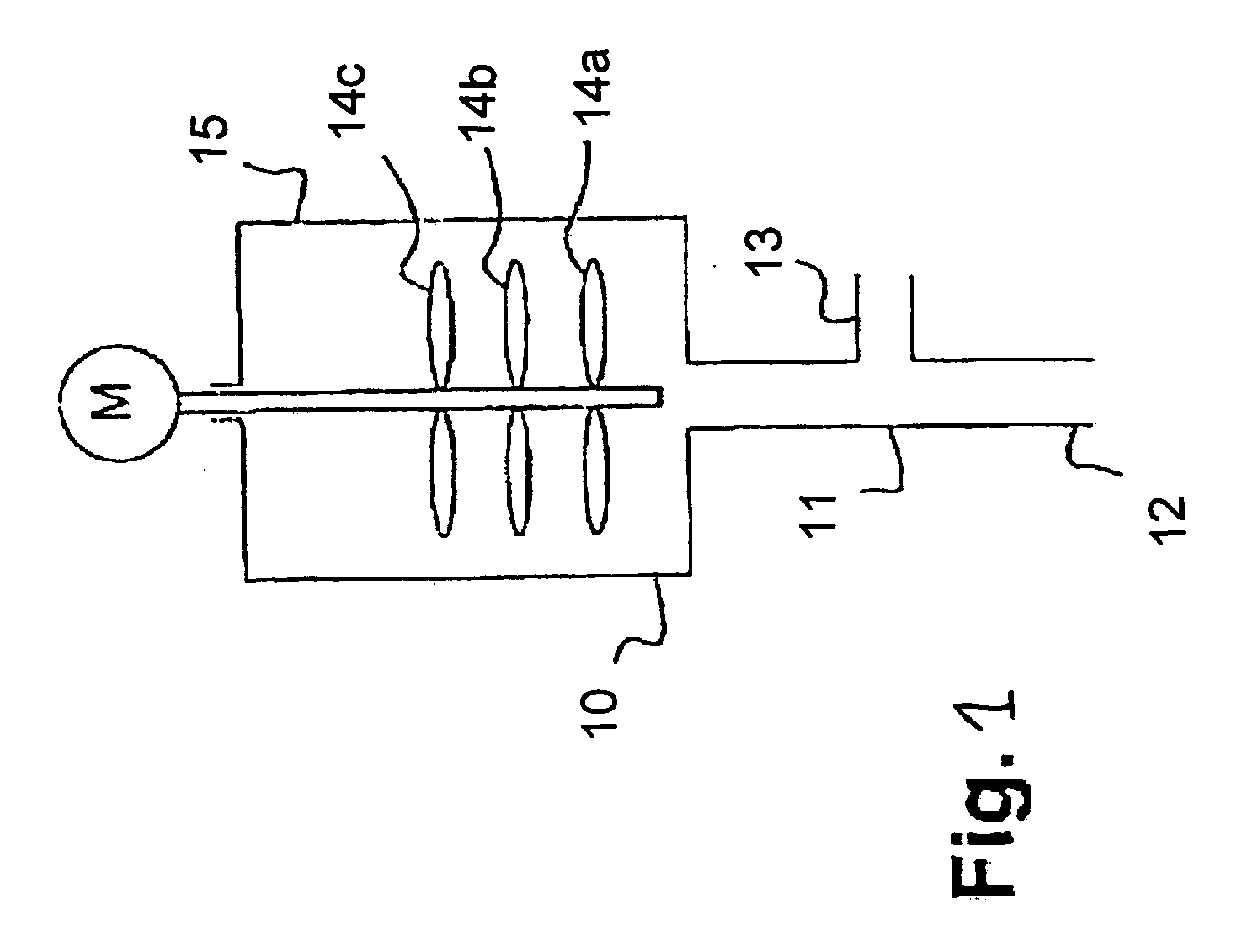Process For Manufacturing Sound Absorbing Cement Tile
a technology of cement tile and sound absorption, which is applied in the direction of ceramicware, manufacturing tools, transportation and packaging, etc., can solve the problems of reducing the final strength of gypsum matrix, reducing foam efficiency, and weakening the structure of the gypsum matrix,
- Summary
- Abstract
- Description
- Claims
- Application Information
AI Technical Summary
Benefits of technology
Problems solved by technology
Method used
Image
Examples
example
[0043] The mixing device that is used comprises a high-shear mixer, which can be of the type disclosed in DE-A-3,138,808, incorporated herein by reference. The blender for air is shown in the figure. It comprises a barrel 10, with a tee 11 at its bottom for receiving the slurry (which may be manufactured according to any high-shear process) through pipe 12 and air through pipe 13. Air and the slurry mixes to some extent in the tee, and then the mixture penetrates into barrel 10. Barrel 10 is equipped with a rotating shaft with agitator blades 14a, 14b, etc., e.g. 8 blades par stage, where the shaft would comprise e.g. 4 stages, with the lower stage being close to the inlet into barrel 10. Barrel 10 will show an inclined top discharge 15. For example, the barrel might be of about 90 mm inner diameter, with blades of about 40 mm radius and 1 mm thick. The barrel will be about 210 mm high up to the lowest part of the discharge inclined part 15, and the blades will be along the shaft se...
PUM
| Property | Measurement | Unit |
|---|---|---|
| Fraction | aaaaa | aaaaa |
| Percent by mass | aaaaa | aaaaa |
| Percent by volume | aaaaa | aaaaa |
Abstract
Description
Claims
Application Information
 Login to View More
Login to View More - R&D
- Intellectual Property
- Life Sciences
- Materials
- Tech Scout
- Unparalleled Data Quality
- Higher Quality Content
- 60% Fewer Hallucinations
Browse by: Latest US Patents, China's latest patents, Technical Efficacy Thesaurus, Application Domain, Technology Topic, Popular Technical Reports.
© 2025 PatSnap. All rights reserved.Legal|Privacy policy|Modern Slavery Act Transparency Statement|Sitemap|About US| Contact US: help@patsnap.com

